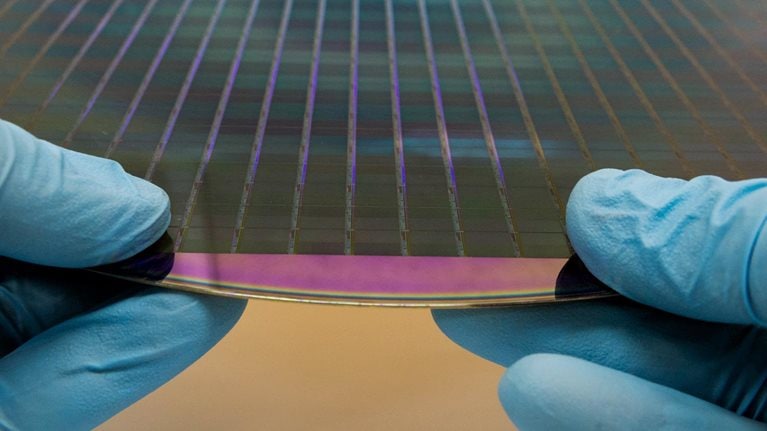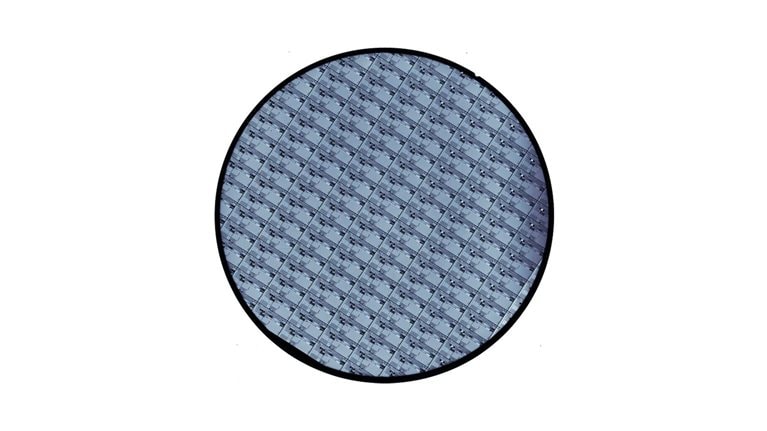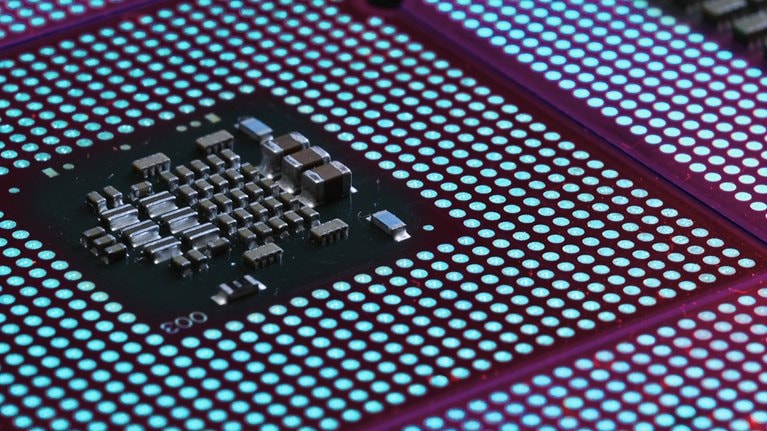Tokyo-based Hidetoshi Shibata is licensed to drive the Shinkansen bullet trains that are famous worldwide for their speed and punctuality. Some might say this is good preparation for his current role leading Renesas Electronics Corporation, the Japanese semiconductor company with annual revenues of about $7 billion, in an era of nonstop change for the semiconductor industry. McKinsey’s André Andonian, Abhijit Mahindroo, and Anupama Suryanarayanan recently spoke with Shibata-san, who was appointed president and CEO of Renesas in July 2019, about his aspirations for the company and the outlook for the semiconductor industry.
McKinsey: What was it like to drive a Shinkansen bullet train?
Hidetoshi Shibata: Back then, I may have been one of the fastest men on earth. Now I sometimes think I might need to move even faster.
McKinsey: Well, you’ve taken some quick actions since taking over Renesas. What are your hopes for the company, and how would you like it to evolve?
Hidetoshi Shibata: I constantly ask myself the same question. What type of growth, or what type of transformation, would I like to see? I choose to be pragmatic and realistic, so what matters most is the relative growth—relative to both our past and to our industry peers. First and foremost, I would like to take Renesas back to a robust growth path. There are multiple ways to do this, and we have a compelling product suite and technology offerings that can help our customers increase their business. But, candidly, what has been challenging at Renesas is the organizational capability required to get those products and solutions to those who desire them most, in the timeliest and most price-competitive manner. In my first six months at Renesas, I focused on reshaping our growth strategy. Now I’m completely focused on execution.
McKinsey: It was an ambitious decision to acquire Intersil and IDT. Can you talk a little bit more about the rationale for those deals? In hindsight, what worked well in terms of integration, and what, if anything, would you have done differently?
Hidetoshi Shibata: Coming from the private-equity and investment sphere, I believed we needed to expand our portfolio to include many more analog and mixed-signal offerings, especially in areas like power management, RF [radio frequency], and connectivity. So that was one reason for the deals.
I also carefully designed the sequence of the acquisitions to make sure they’d be successful. If you look at Intersil, it is primarily a power-management supplier. If you look at our SoCs [systems on a chip] and microcontrollers, there’s a power-management integrated circuit [PMIC] attached to each one. We used to use PMICs from other competitors on the reference board. Internalizing Intersil capabilities and their product portfolio allowed us to offer a comprehensive solution.
At the same time, I was really careful about the cultural fit. Like it or not, we are what we are. Integrating with Intersil, which has traditionally been a little more aggressive organization, could have come with significant challenges. But I wanted to enable cultural and behavioral changes from this cross-pollination and combination of different cultures.
To my pleasant surprise, younger colleagues in Renesas, who had begun their careers with the company, told me that they enjoyed having supervisors from different countries. They thought it was refreshing and exciting, and they liked the way the company was changing. That said, the cultural transformation was eventually not as dramatic as I’d expected, probably because the two companies had many cultural similarities from the beginning. Overall, however, the integration went very smoothly.
Then came IDT. Its leadership is even more aggressive in financial management and pursuing growth. So now we are in the middle of more exciting cultural and behavioral changes, particularly in areas outside auto.

Semiconductor design and manufacturing: Achieving leading-edge capabilities
McKinsey: Renesas is the result of several integrations—NEC and the chip operations of Mitsubishi and Hitachi. You also have a diverse investor base that includes Nissan and Toyota, as well as the Innovation Network Corporation of Japan. What challenges and opportunities arise from the mix of cultures? How can you use your base as an advantage?
Hidetoshi Shibata: There are two interesting observations related to Renesas being a mixture of three cultures. As you can imagine, while Hitachi, Mitsubishi, and NEC have different cultures and behavior patterns, they also have many similarities. In such a situation, people can become myopic and focus on the gaps or differences. Also, culturally, because all of the companies involved were Japanese, the organizations were used to making decisions by committee, rather than assigning individual responsibility. In a case like that, often no one accepts the responsibility for bad decisions.
Another negative was having a patchwork of business processes and systems because there was no central force to drive the entire organization in one direction. The introduction of IDT and Intersil has been a great help in that respect, since it helped open the eyes of a lot of colleagues who had spent their entire careers with Renesas. They saw the necessity of adopting simpler, industry-standard practices—for example, in IT systems and business processes—to accommodate further acquisitions. Otherwise, we’d have to engage in step-by-step, case-by-case discussions every time we welcomed a new partner.
Going forward, I would like to focus on the diversity that we now embody as a result of those mergers and acquisitions. Even within Japan, I believe this will set a solid foundation for increasing diversity even further in terms of technical backgrounds, cultural backgrounds, religions, and races. Hopefully, I can make Renesas a truly cosmopolitan organization down the road.
McKinsey: Now let’s talk about some specific sectors. Automobiles are increasingly connected and need more and more electronics. How has your strategy and approach to the automotive sector evolved?
Hidetoshi Shibata: Electronics or semiconductor content for automobiles will likely continue to rise, and that puts us in a very good position in the semiconductor space as a whole. Within automotive, it looks like the progress is occurring in two distinct ways. First, compute capabilities are increasing consistently, and that enables us to streamline the spaghetti-like electronics architectures in autos. The higher compute power is also enabling more advanced safety functions, and more enjoyable connectivity and infotainment functionalities.
A second growth angle involves simple electrification. This is about the electrification of not just the power train but also simple things, such as power seats and power windows. Historically, we’ve tried to provide as many discrete high-capability semiconductor devices as possible, whether they were microcontrollers, insulated-gate bipolar transistors [IGBTs], or bipolar complementary metal-oxide semiconductors [BiCMOS]. We were trying to master those products individually and provide them to industry-leading large customers. But now we are trying to take a bimodal approach. For simple electrification, thanks partly to the acquisitions of IDT and Intersil, we can now provide many more ready-to-use solutions. In some cases, we provide reference designs or proofs-of-concept, but others are truly systems that can be used out of the box. We are putting a lot more effort into making those system-level solutions available to our customers.
Likewise, we’re moving away from mastering individual devices. Instead, we’re investing more in software-development tools and ecosystem enrichment, such as connectivity to the cloud services of Amazon, Microsoft, and others. That strategy is helping us gain traction, primarily in markets like China and India.
We’re also seeking growth by creating scalable and more flexible digital-product offerings that allow customers to design a car’s entire electronics architecture more easily. Historically, we offered rudimentary 16-bit microcontrollers, 32-bit microcontrollers, and ARM-based SoCs—all with completely different architectures, which made it difficult for customers to scale their applications across our product line, or port applications from one product to another.
We’re moving away from mastering individual devices. Instead, we’re investing more in software-development tools and ecosystem enrichment, such as connectivity to the cloud.
We’re now in the middle of making our product offerings more scalable. With the new product suite, customers don’t have to rewrite their applications as they transition across different controllers. They can also make simple tweaks between the central electronic control unit and what some customers call zone controllers, which control specific sensors and actuators. We’re making it easier for customers to make changes from one generation of cars to the next, or from one trim to another within the same generation.
McKinsey: Now a question on 5G and the evolution of wireless technology: What is Renesas’s role in enabling these breakthrough technologies, especially in Japan?
Hidetoshi Shibata: Regardless of the type of connectivity, I believe our role is to provide more easy-to-use ingredients to help more customers. Historically, we focused on leading telecom-equipment providers. Now we’re also serving newer, smaller companies with fast-moving, innovative solutions. We realized that we couldn’t address their needs on our own, so we’re also trying to strengthen, deepen, and expand our partnerships with targeted distribution partners.
So we’re developing what we call “winning combination” solutions to enable customers to focus on developing their application software rather than spending time and resources on hardware configuration. We are working to provide combinations of ingredients that are proven to work together seamlessly. Along with those, we are also working to provide the relevant development tools and software and connectivity to standard cloud services. So customers will be able to open a box and immediately test their application software. If we’re successful, we will be able to provide more of our technologies—like massive multiple input, multiple output [MIMO]; RF; or antenna technologies—to a more diverse customer base, and enable new applications beyond conventional cellular communications, like connected vehicles, autonomous factories, and remote healthcare.
That said, what’s often missing for breakthrough technologies, at least in Japan, is demand traction. If we can drive early traction in demand for innovative technologies, it becomes a lot easier for private-sector companies like us to develop and provide the solutions to enable them.
McKinsey: Like 5G, Industry 4.0—the Fourth Industrial Revolution—is a big topic. How is Renesas planning to participate in this opportunity?
Hidetoshi Shibata: It is very similar to what we discussed regarding connectivity in 5G and beyond, with one key difference: a focus on AI [artificial intelligence], and what we call endpoint AI in particular. The endpoint represents the true point of action, as opposed to the edge of the cloud. Near-zero latency is critically important in those endpoints. So that is a key focus of our solutions. For example, we provide dynamically configurable hardware architectures that let customers enjoy the benefit of hardware-processing speeds while also providing more flexibility to change the functionality or algorithms.
We are also enriching our translator capabilities to effectively port AI models trained on industry-standard networks to our hardware. Toward that end, we are working closely with advanced endpoint-compiler software partners to enable customers to test capabilities purely in the cloud before porting them over to our boards, and then, finally, to implement these seamlessly on our chips.
McKinsey: Do you think recent geopolitical issues will affect the semiconductor industry?
Hidetoshi Shibata: There will be both headwinds and tailwinds. I think the industry will be more and more separated into two worlds: a US-centric world and a China-centric world. Therefore, despite the continued robust growth of the industry as a whole, the size of the addressable market will become smaller for many companies. In my opinion, that will ignite additional consolidation and drive more efficiencies. It might also create a little more volatility in pricing, inventory management, demand management, and other areas, which could make things difficult for the industry. However, I’m hopeful that the industry will overcome these challenges. Further, with consolidation and the changing nature of competition, there might even be a better outlook for investors, particularly those who prioritize stable cash flows.
I think the semiconductor industry will be more and more separated into two worlds: a US-centric world and a China-centric world.
McKinsey: The year 2020 will be remembered for the global pandemic. What was your greatest challenge this year, and what will the post-COVID-19 world look like?
Hidetoshi Shibata: I have to admit that I was horrified, as a brand-new CEO, to see demand plummet catastrophically, especially in the auto space. But we were successful in managing our spending and production in a timely manner until the market demand bounced back. As a result, we expect 2020 to see the highest operating profit in the history of Renesas.
Back in April and May of 2020, when I was facing the most stress I’d ever faced in my job, I received a lot of compassion, empathy, and encouragement from employees worldwide. A significant number volunteered to swap out a portion of their cash pay for company stock. The trust they exhibited was very encouraging, and I realized that I could mold this organization into a more animated, motivated, high-energy group of people.
I’ve also realized that in both our private and professional lives, we are able to live without physically interacting with each other. This does come with a lot of limitations and can be frustrating. Even so, people are figuring out ways to connect and collaborate. This could pave the way for an efficient, hybrid model for conducting business and pursuing innovations throughout the world. For example, you don’t have to go to Shenzhen or Silicon Valley to initiate a very innovative conversation. You can instantly start those electronically. I find that amazing.
McKinsey: What is your leadership philosophy?
Hidetoshi Shibata: That might be one of the most important questions we’ve discussed. I’m trying to take a completely different approach from many people. Typically, in a well-run, professional-services organization, you tend to come across very effective “servant leadership.” I’m trying to embody servant leadership at Renesas, using my private-equity experiences as a guide.
As needed, I may provide inspiration to employees, or help them with data points and facts, or suggest some alternatives to ensure that everything runs smoothly and efficiently. I think this allows employees to achieve their full potential and growth aspirations, both personally and for the company. Employees can collectively share the experiences of delivering results and meeting and beating targets that they themselves set.
I don’t know to what extent this approach is effective and practicable in an industrial manufacturing company with 20,000 employees. I am experimenting now and may change or tweak my philosophy as I make progress.
I also enjoy comparing notes with my peer CEOs, most of whom run larger-scale organizations. I’ve connected with some of them at McKinsey’s T-30 conference, and I’ve found it interesting to hear what other people are doing.
McKinsey: Is there any advice you would give young professionals beginning a career in the semiconductor industry?
Hidetoshi Shibata: This is not specific to semiconductors, but I would advise them to be as simple and straightforward as possible about their passion or motivation. They don’t have to be focused on groundbreaking or world-changing ideas, although that is always an option. Instead, they might concentrate on more incremental growth. Being true to their hearts will help people in many respects. It will encourage them to expand their horizons, raise the bar, and experiment with something completely new, such as meeting with new people in new geographies. Being simple and straightforward is always the best approach in good times and bad, be it in the semiconductor industry or elsewhere.
Comments and opinions expressed by interviewees are their own and do not represent or reflect the opinions, policies, or positions of McKinsey & Company or have its endorsement.


